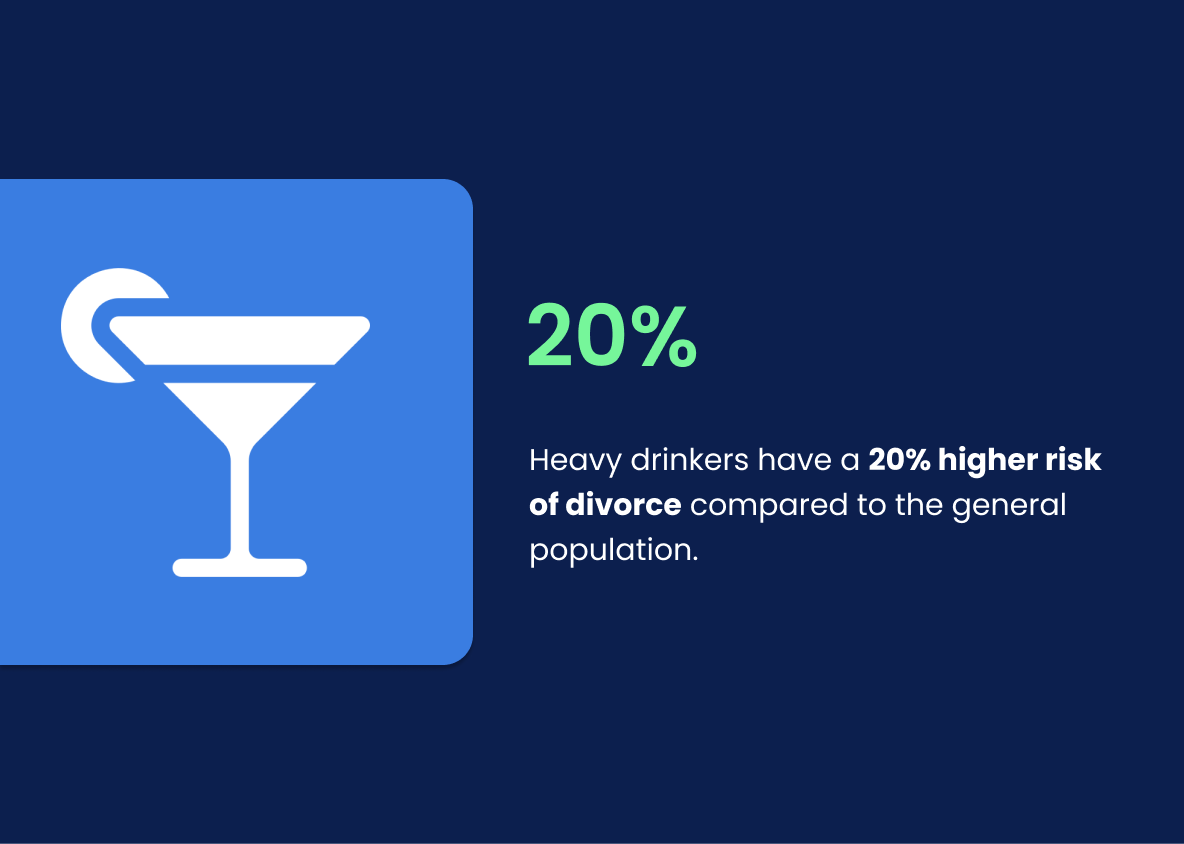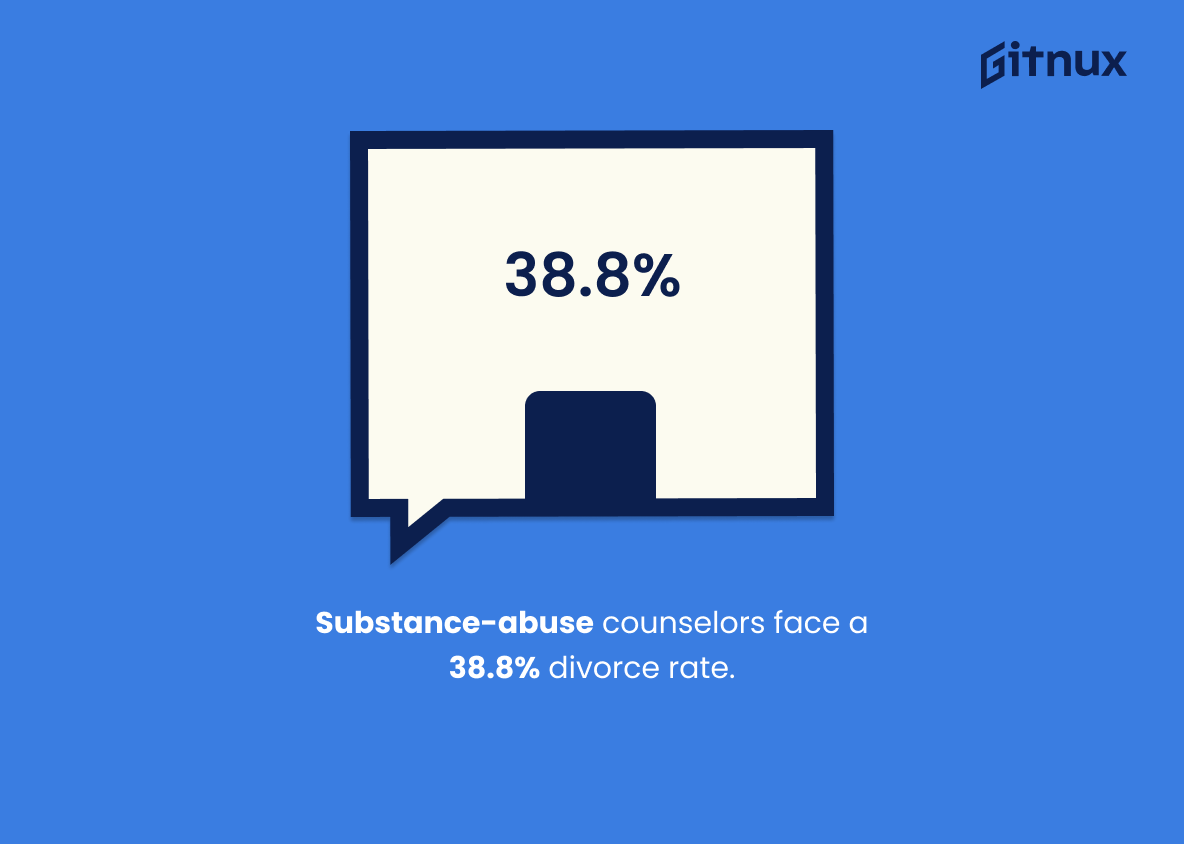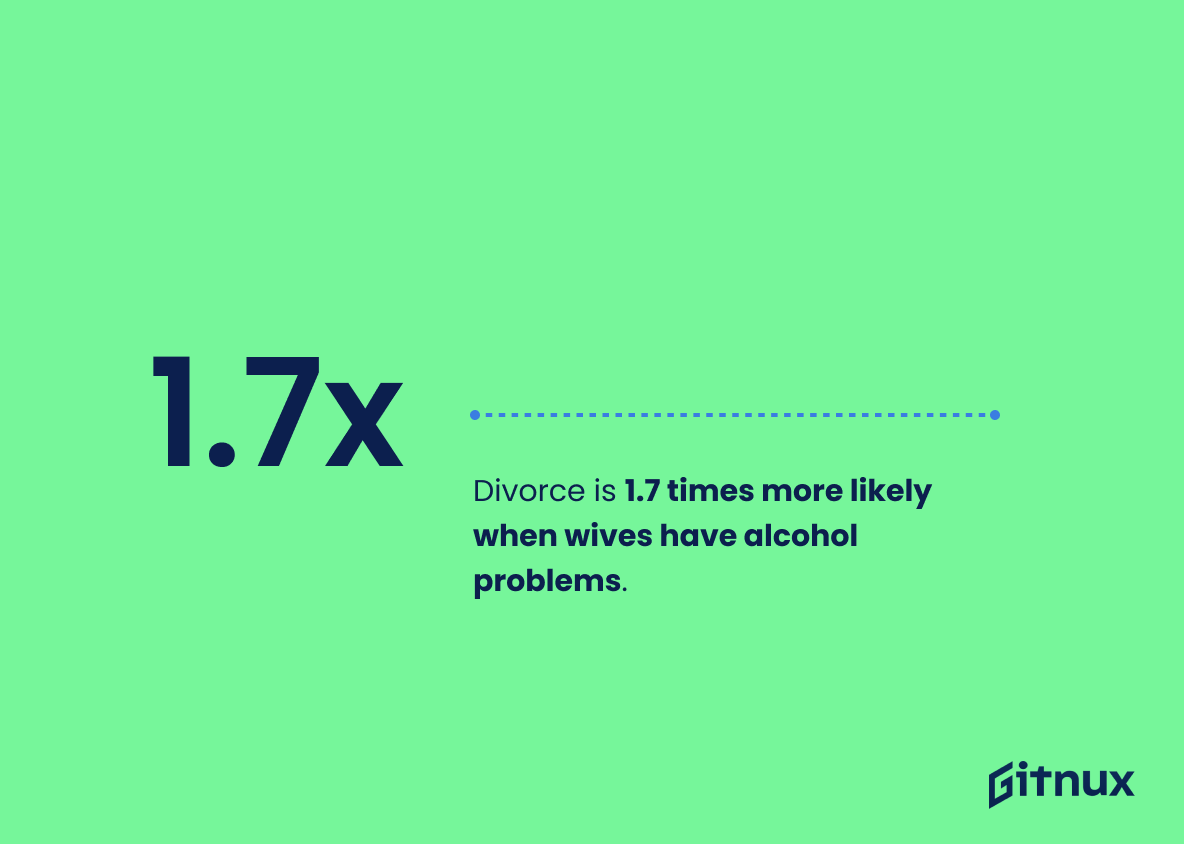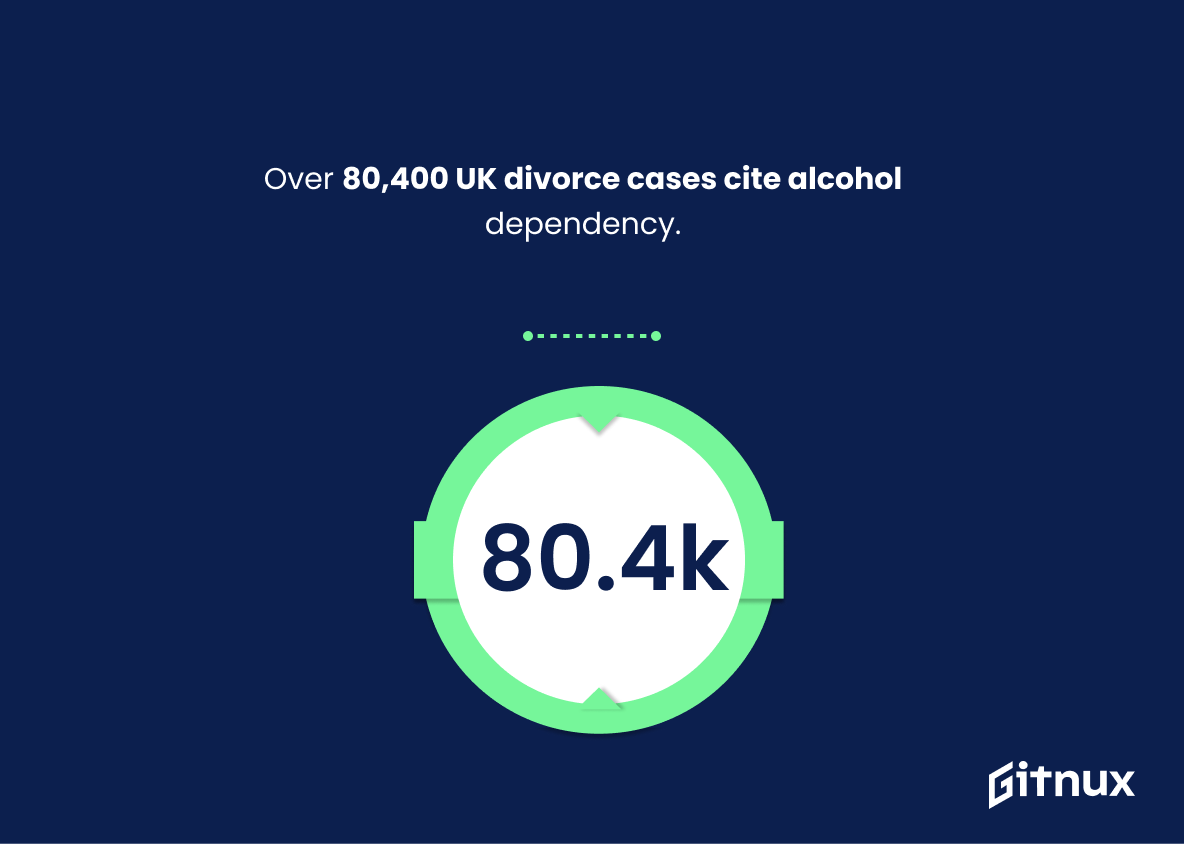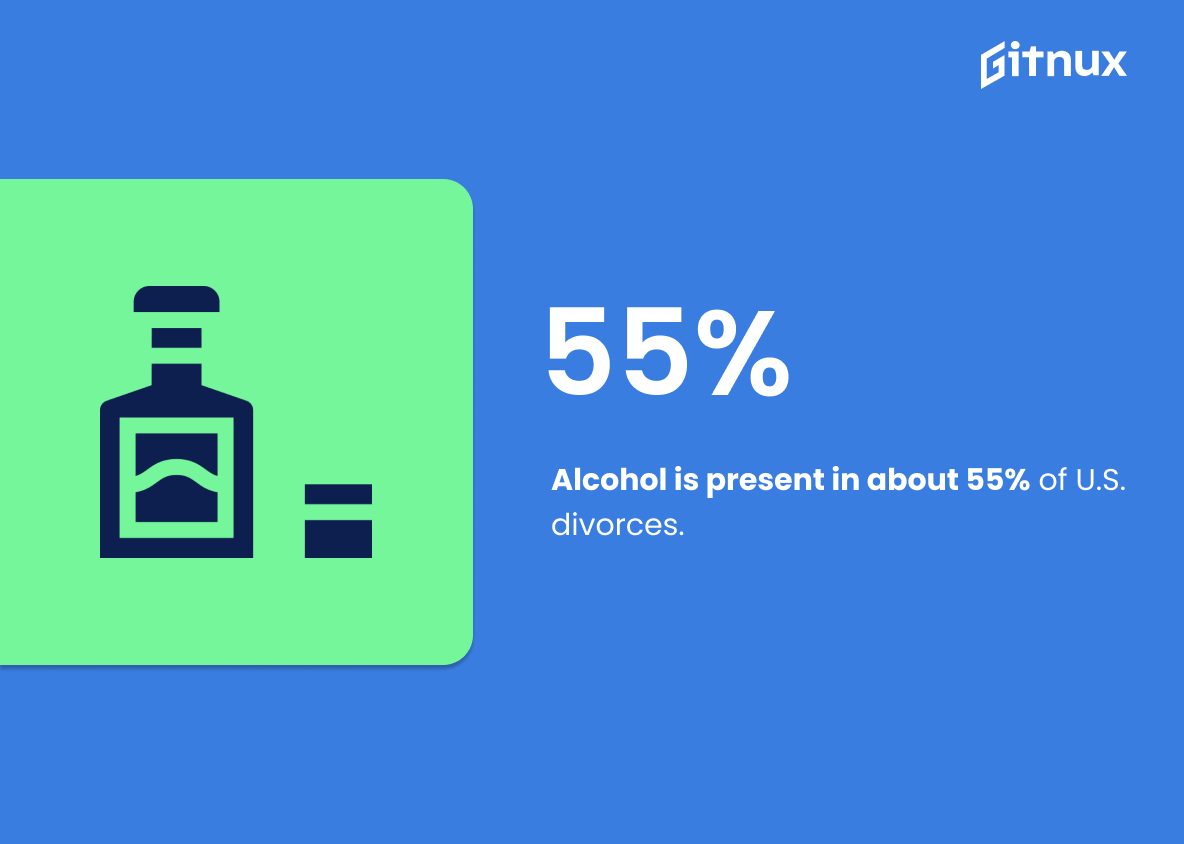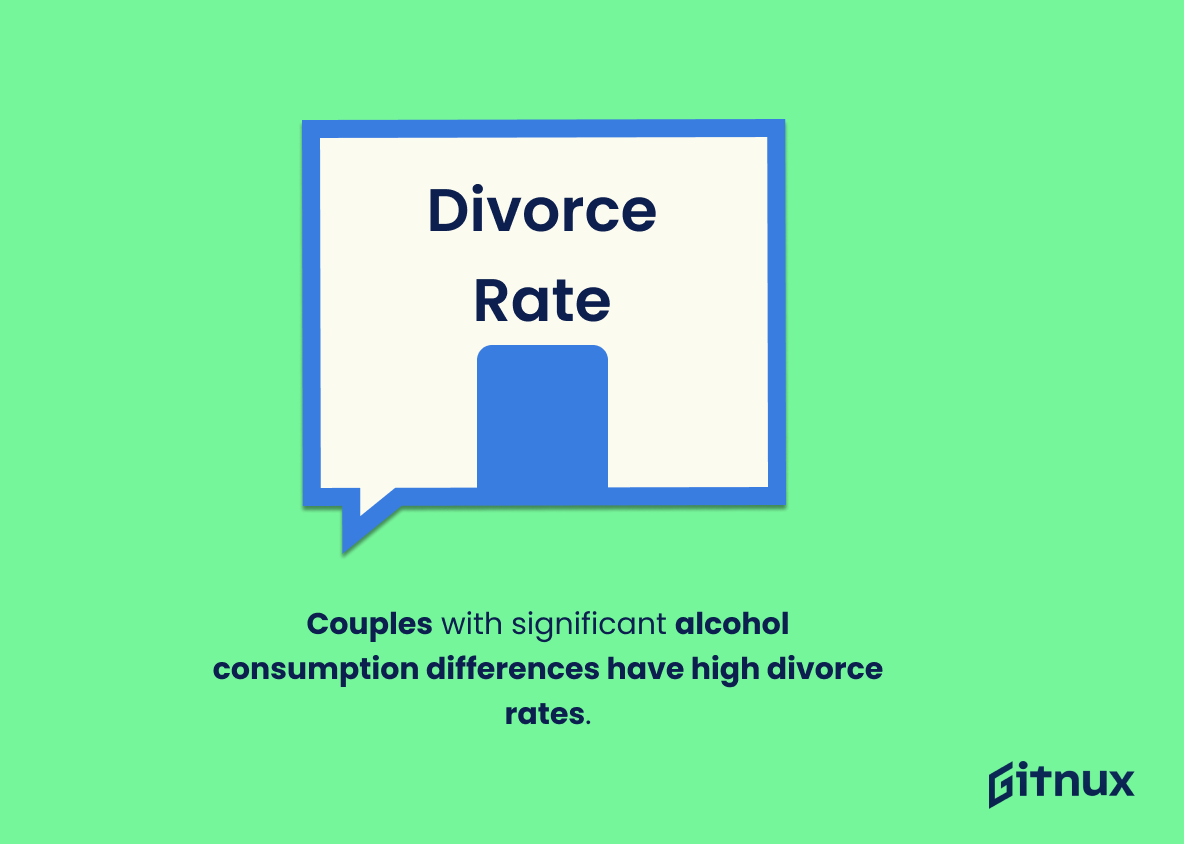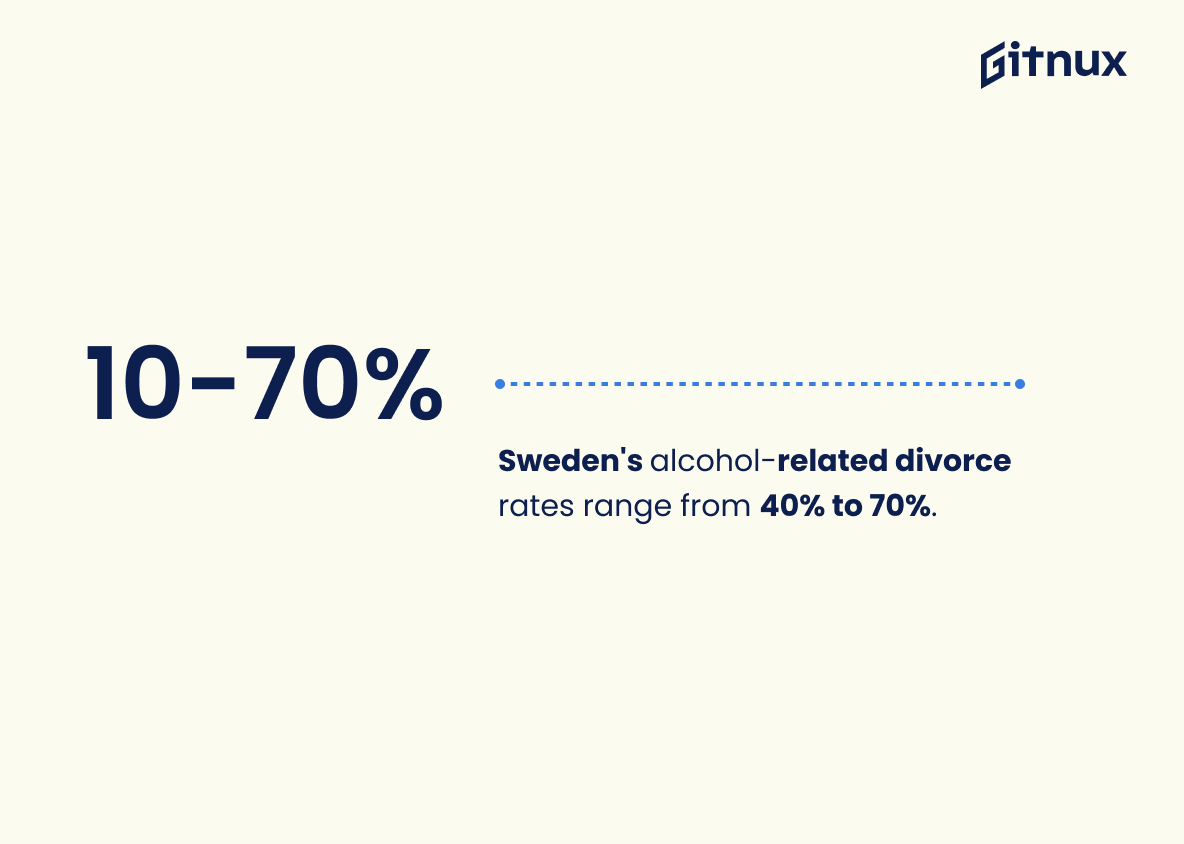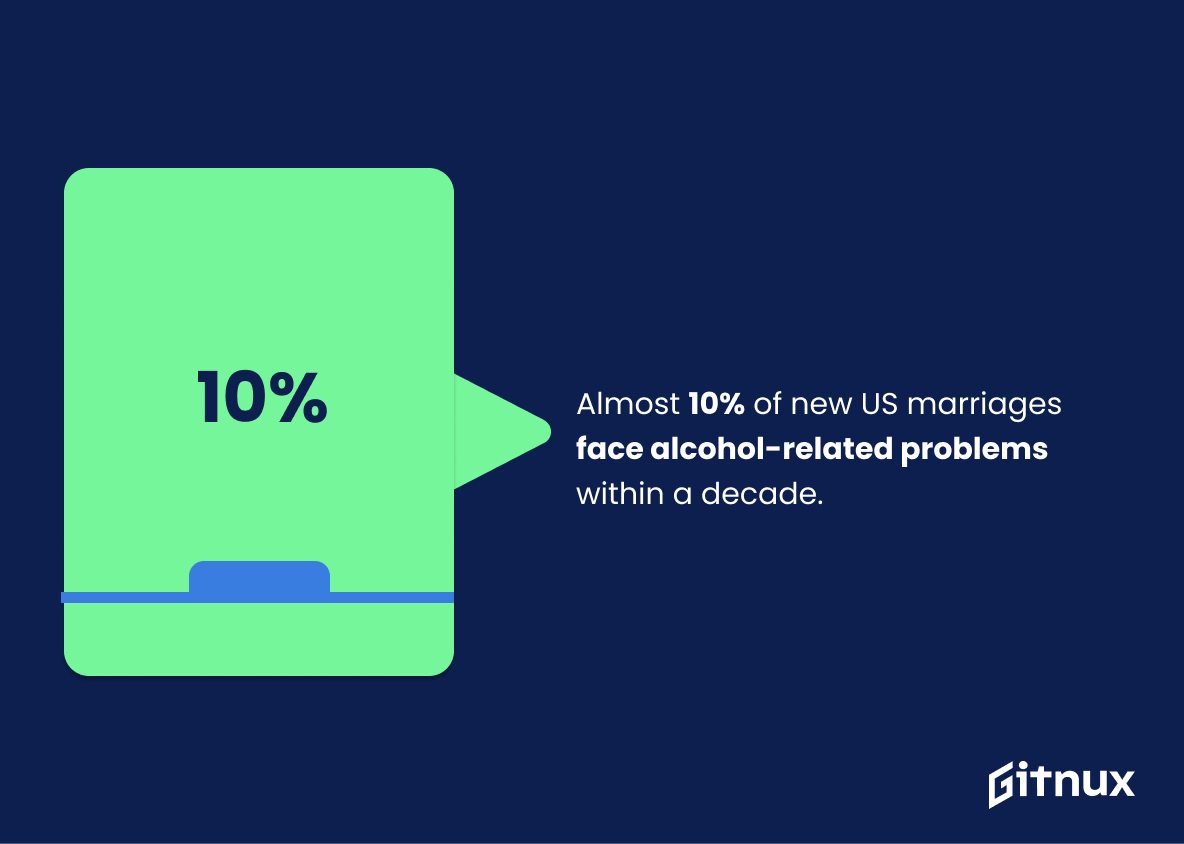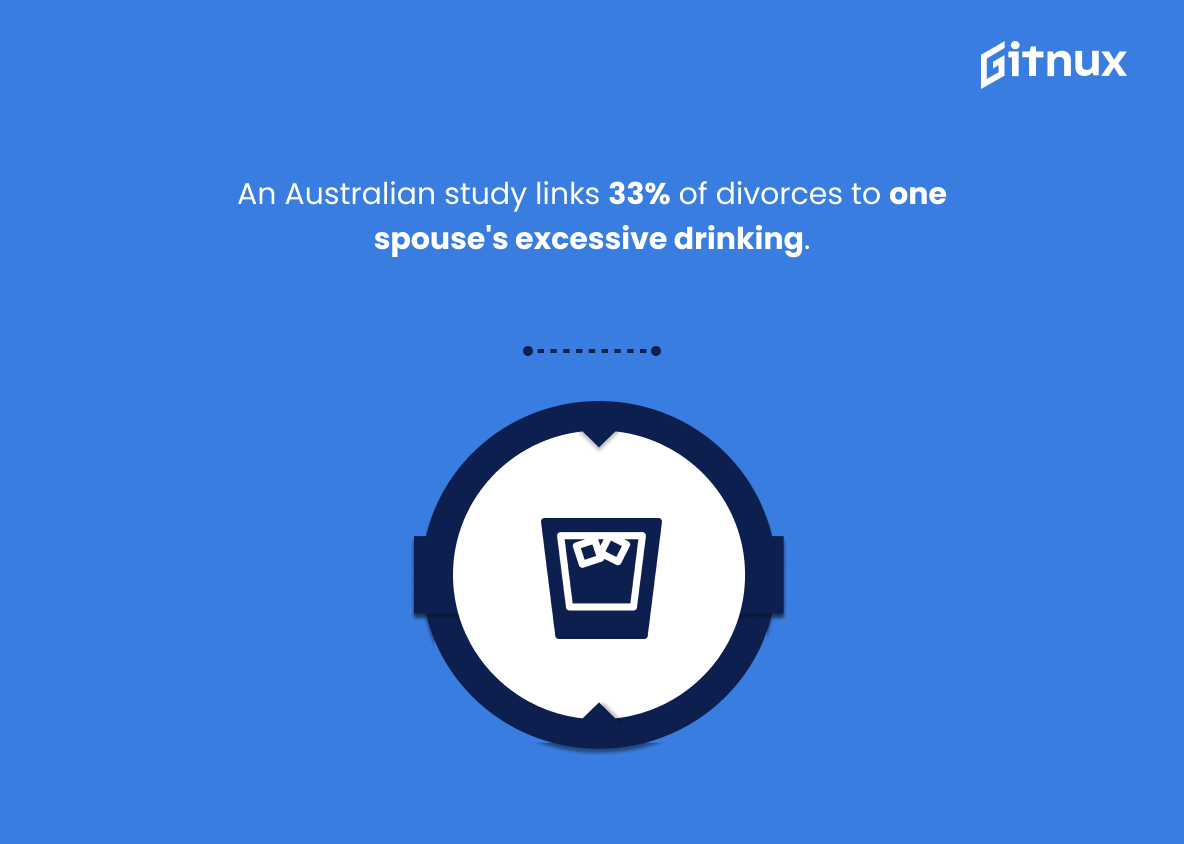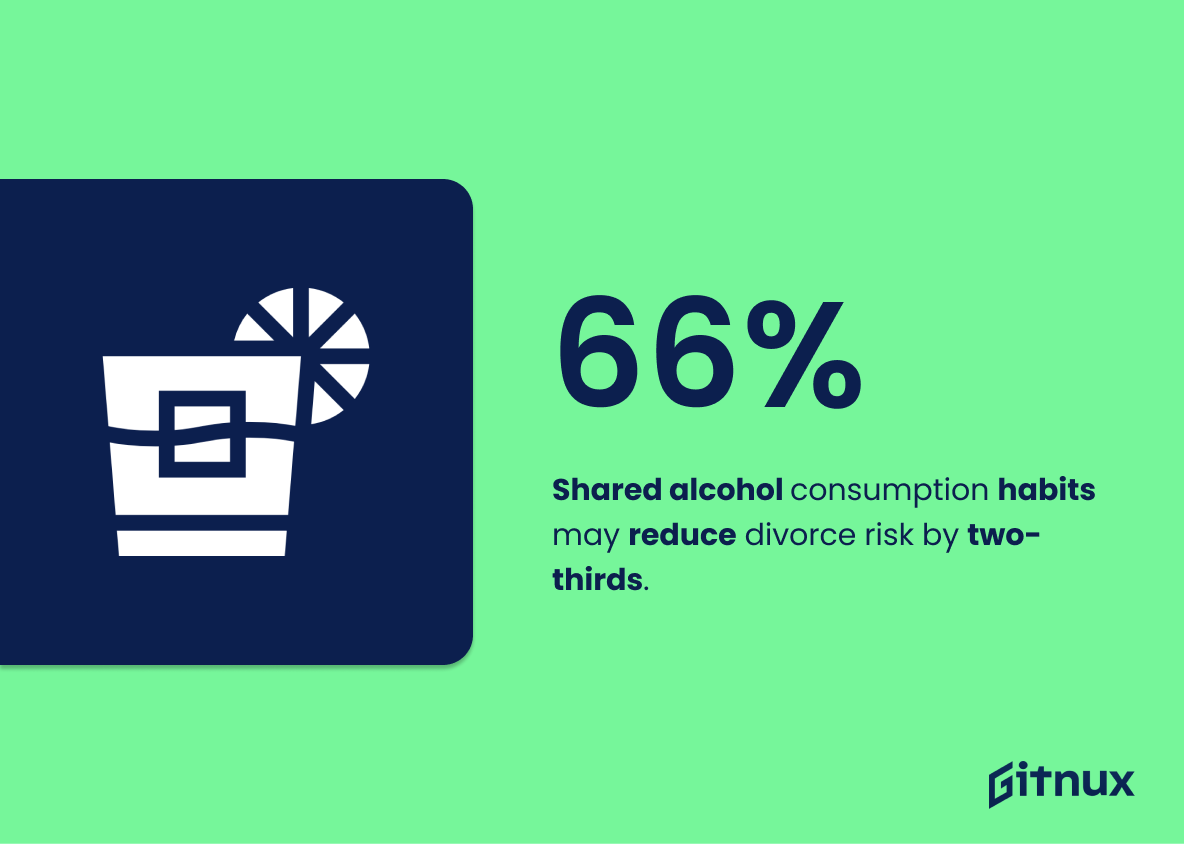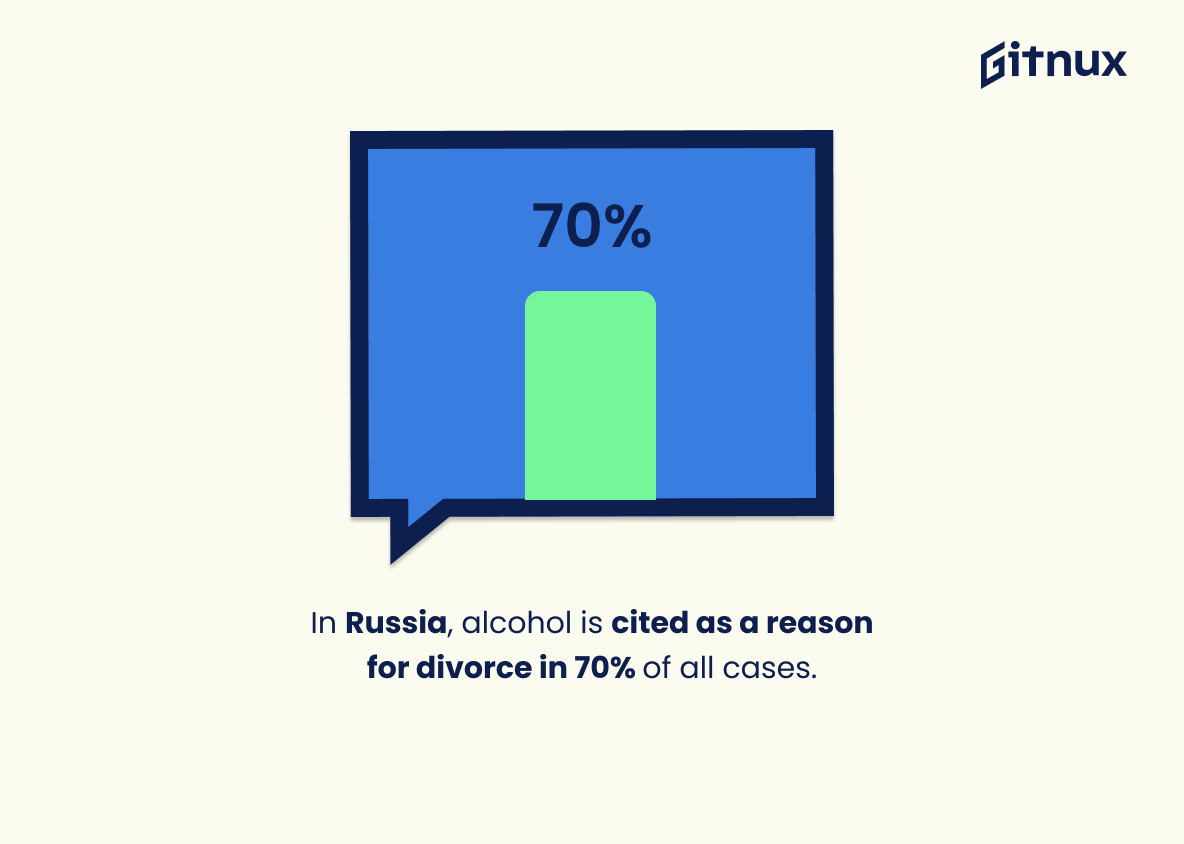Alcohol has long been known to have a negative impact on relationships, and the statistics surrounding alcohol abuse and divorce are staggering. Approximately 50% of divorced couples cite alcohol abuse as a factor leading to their divorce, while couples where only one spouse drinks heavily have a higher divorce rate (5.8%) than those where both spouses consume alcohol (1.9%). Heavy drinkers also have 20% higher risk of divorce compared to the general population, with substance-abuse counselors having an even higher 38.8%. Women who develop an Alcohol Use Disorder face 50% greater risk for getting divorced than men in similar situations; when it’s the wife that develops this disorder, her chances of divorcing increase by 1.7 times more than if it were her husband instead.
In 2013 alone, 60% of U.S adults who abused alcohol ended up getting divorced – 80%, among college-educated couples – while discrepancy in drinking habits between partners increases likelihood for separation threefold. Furthermore, alcoholic men reduced their risk of marriage dissolution by 60%, simply by stopping drinking altogether; similarly high numbers can be found across Europe too: In UK over 80 thousand family law cases involve alcoholism as reason for splitting up; Sweden sees 40%-70%; Russia 70%. Finally 10 percent all new marriages will experience problems related to excessive consumption within first decade together – 33 % Australian divorces linked directly with such behavior – but shared habit may reduce chance two thirds.
It is clear from these facts that there is strong correlation between heavy drinking and marital instability or outright failure – so let us take closer look at how exactly does Alcohol Abuse affect our most intimate relationships…
This statistic is a powerful reminder of the destructive effects of alcohol abuse on relationships. It highlights the fact that alcohol can be a major contributing factor to the breakdown of marriages, and serves as a warning to couples to be mindful of their drinking habits. It is an important statistic to consider when discussing the impact of alcohol on divorce rates.
Couples where only one spouse drinks heavily have a higher divorce rate (5.8%) than those where both spouses consume alcohol (1.9%).
This statistic is a powerful indicator of the impact that heavy drinking can have on a marriage. It shows that when one spouse drinks heavily, the chances of divorce are significantly higher than when both spouses consume alcohol. This is an important piece of information for anyone considering marriage, as it highlights the potential risks of heavy drinking in a relationship. It also serves as a warning to couples who are already married, as it suggests that heavy drinking can be a major factor in the breakdown of a marriage.
Alcohol And Divorce Statistics Overview
Heavy drinkers have a 20% higher risk of divorce compared to the general population.
This statistic serves as a stark reminder of the potential consequences of heavy drinking, particularly when it comes to relationships. It highlights the fact that excessive alcohol consumption can have a detrimental effect on marriages, and that couples should be aware of the risks associated with it. By understanding the potential impact of alcohol on their relationship, couples can take steps to reduce the chances of divorce.
The divorce rate among substance-abuse counselors is 38.8%, higher than average for other occupations.
This statistic is a stark reminder of the impact that substance abuse can have on relationships. It serves as a warning to those considering a career in substance abuse counseling, as well as a reminder to those already in the field to be mindful of their own habits. It also highlights the importance of seeking help for substance abuse issues before they become a problem in a marriage.
Divorce is 1.7 times more likely when the wife has alcohol problems compared to when the husband has alcohol problems.
This statistic is a powerful indicator of the impact of alcohol on marriages, particularly when it comes to divorce. It highlights the fact that when the wife has alcohol problems, the likelihood of divorce is significantly higher than when the husband has alcohol problems. This is an important statistic to consider when discussing the effects of alcohol on marriages and divorce rates.
In 2013, the divorce rate for U.S. adults who abused alcohol was 60%.
This statistic is a stark reminder of the devastating effects that alcohol abuse can have on marriages. It highlights the fact that alcohol abuse can be a major contributing factor to divorce, and serves as a warning to couples to be mindful of their drinking habits.
In the UK, alcohol dependency is cited as a reason for divorce in over 80,400 family law cases.
This statistic is a stark reminder of the impact that alcohol dependency can have on marriages and families. It highlights the prevalence of alcohol-related issues in divorce cases, and serves as a warning to those considering marriage that alcohol dependency can be a major factor in the breakdown of a relationship. It is a sobering reminder of the potential consequences of alcohol abuse, and should be taken into account when discussing the topic of alcohol and divorce.
In the US, heavy drinking is present in approximately 55% of divorces.
This statistic is a powerful reminder of the potential consequences of heavy drinking on marriages. It highlights the fact that alcohol can be a major contributing factor to the breakdown of relationships, and that it should not be taken lightly. It is a stark reminder that alcohol can have a devastating impact on marriages, and that it should be consumed responsibly.
According to a study in Norway, couples with significant differences in alcohol consumption tend to have the highest divorce rates.
This statistic is a powerful indicator of the potential consequences of alcohol consumption on relationships. It highlights the importance of couples having similar drinking habits, as those with significant differences in alcohol consumption are more likely to experience a divorce. This is an important point to consider when discussing Alcohol and Divorce Statistics, as it provides insight into the potential risks of alcohol consumption on relationships.
Divorce rates in Sweden range from 40% to 70% among couples where alcohol is a central problem in their marriage.
This statistic is a powerful reminder of the devastating effects that alcohol can have on a marriage. It highlights the fact that when alcohol is a central problem in a relationship, the chances of divorce are significantly higher than in couples where alcohol is not an issue. This statistic is an important piece of information to consider when discussing the correlation between alcohol and divorce.
In the US, almost 10% of all new marriages will be affected by alcohol-related problems during the first 10 years of the marriage.
This statistic is a stark reminder of the potential consequences of alcohol-related issues on marriages. It highlights the fact that alcohol can have a devastating impact on relationships, and that it is important to be aware of the risks associated with excessive drinking. This statistic is especially relevant in the context of a blog post about Alcohol and Divorce Statistics, as it serves to illustrate the potential for alcohol to contribute to the breakdown of marriages.
An Australian study found that 33% of divorces were linked to excessive alcohol consumption by one spouse.
This statistic is a powerful reminder of the potential consequences of excessive alcohol consumption in a marriage. It highlights the fact that alcohol can be a major contributing factor to the breakdown of a relationship, and that it should not be taken lightly. This statistic is an important piece of information for anyone considering marriage, or for those already in a marriage, as it serves as a warning of the potential risks associated with alcohol abuse.
Couples with shared alcohol consumption habits may have their divorce risk reduced by two-thirds.
This statistic is a powerful reminder of the potential benefits of couples sharing similar alcohol consumption habits. It suggests that couples who are able to come to an agreement on how much and how often they drink may be able to significantly reduce their risk of divorce. This is an important point to consider when discussing the relationship between alcohol and divorce, as it highlights the potential for couples to take proactive steps to protect their marriage.
In Russia, alcohol is cited as a reason for divorce in 70% of all cases.
This statistic is a powerful indicator of the impact of alcohol on marriages in Russia. It speaks to the prevalence of alcohol-related issues in the country and the potential for alcohol to be a major factor in the dissolution of marriages. It is an important statistic to consider when discussing the effects of alcohol on relationships and the potential for divorce.
Conclusion
The statistics presented in this blog post demonstrate the significant impact that alcohol abuse can have on relationships and marriages. From couples where only one spouse drinks heavily to those with shared drinking habits, it is clear that excessive consumption of alcohol has a direct correlation with divorce rates. In addition, women are more likely than men to experience divorce due to an alcohol use disorder, while people with a family history of alcoholism also face higher risks for marriage dissolution. It is evident from these figures that individuals should be aware of the potential consequences associated with heavy drinking when entering into or maintaining a relationship.
References
0. – https://www.everydayhealth.com
1. – https://www.ncbi.nlm.nih.gov
2. – https://www.rbth.com
3. – https://www.pubmed.ncbi.nlm.nih.gov
4. – https://www.hamrah.co
5. – https://www.azbigmedia.com
6. – https://www.link.springer.com
7. – https://www.worldhealth.net
8. – https://www.medscape.com
9. – https://www.businessinsider.com
10. – https://www.telegraph.co.uk
11. – https://www.marriage.com
12. – https://www.youtube.com
13. – https://www.spring.org.uk
